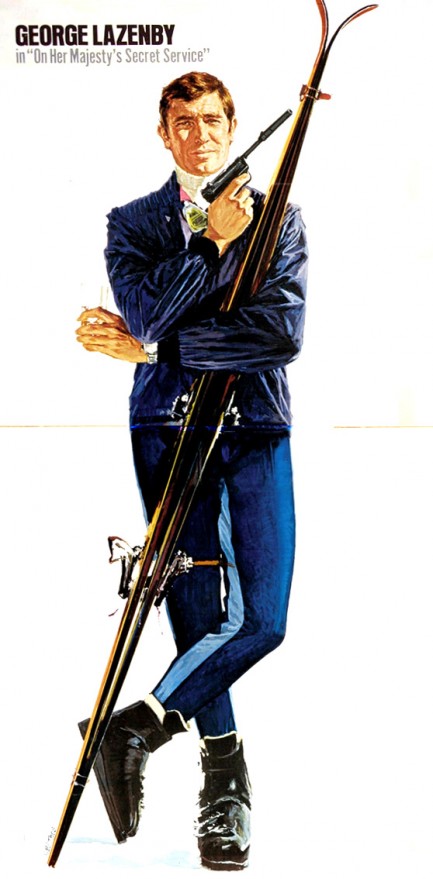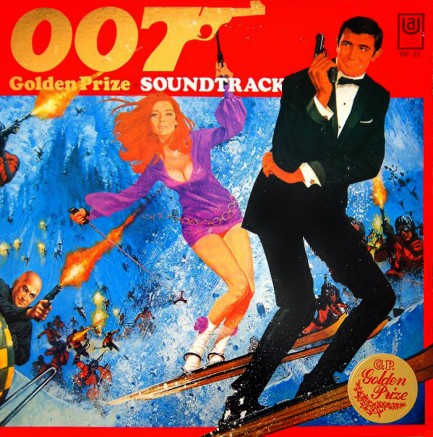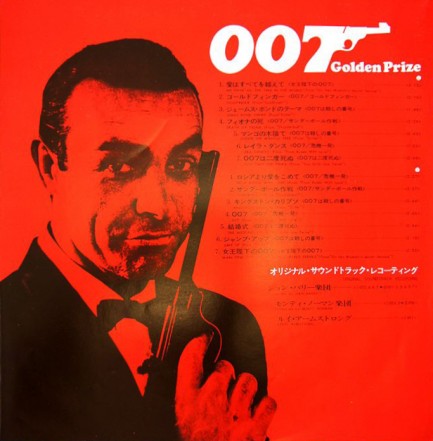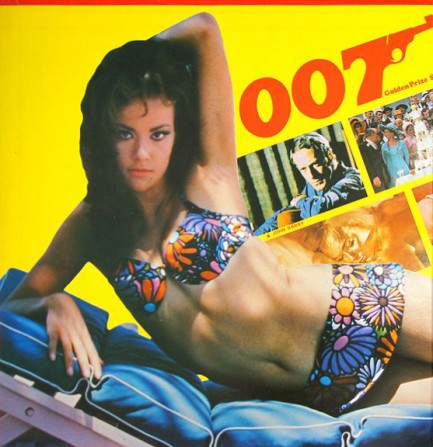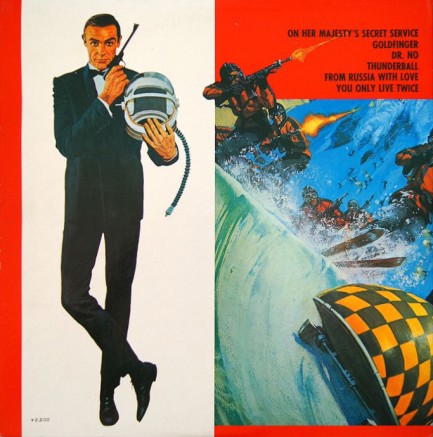 If you're going to put a musical group together make it the best. 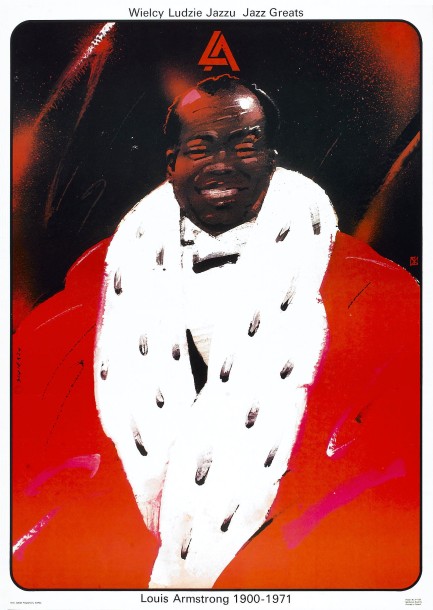
It's been awhile since we featured Polish art, so today we're revisiting the interesting aesthetic of that country with a small collection serving as a reminder that jazz was the predominant popular musical form during the heydey of the pulp era. Polish artist Waldemar Świerzy painted this series of portraits featuring American jazz icons. He signed them all on the left edges. The phrase “wielcy ludzie jazzu” on the top of each print means, “great jazz people,” some of whom, you've noticed, he painted more than once. Świerzy was born in 1931, and painted these in the mid-1980s, focusing mainly on musicians who had been active and popular during his youth. There are even more we didn't show here. Several of these musicians are mentioned by name in books we've read, for example Louis Armstrong, who's the subject of a brief discussion in Harold Sinclair's New Orleans based novel Music Out of Dixie. We think this is nice work by Świerzy. You can see more Polish art here, here, and here. 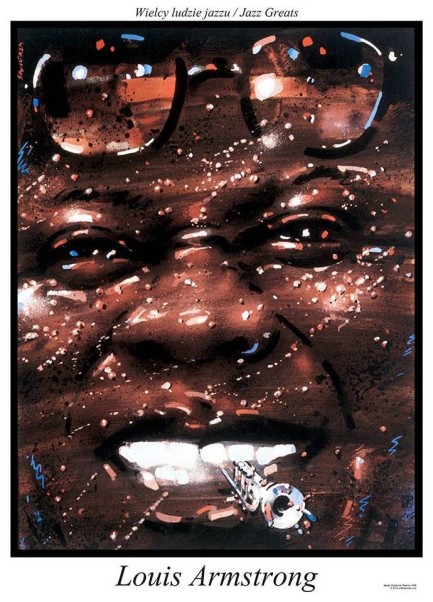 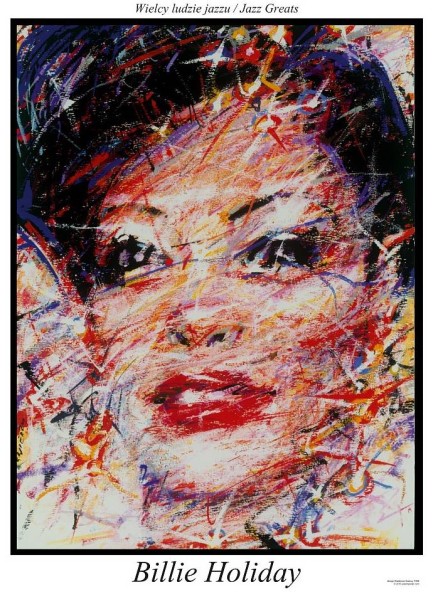 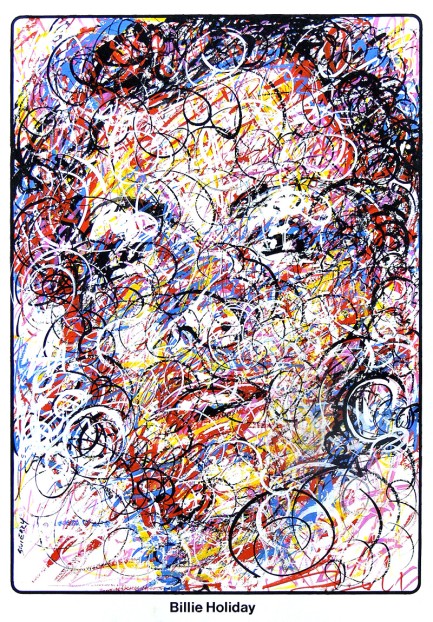 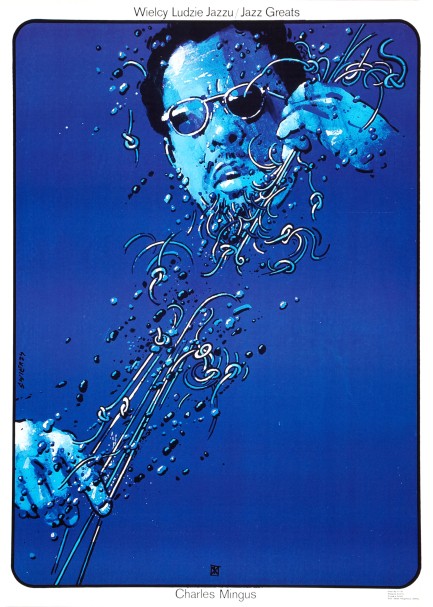 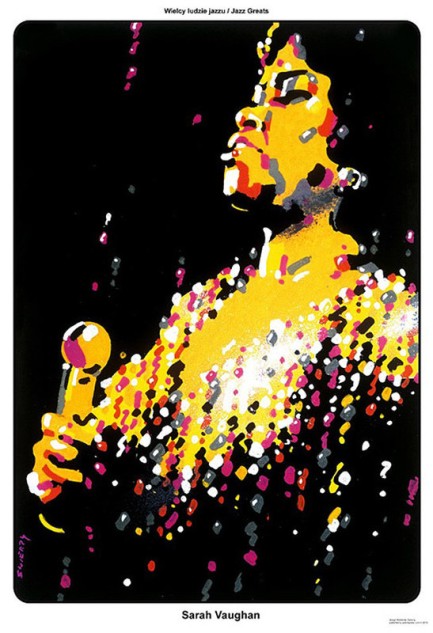 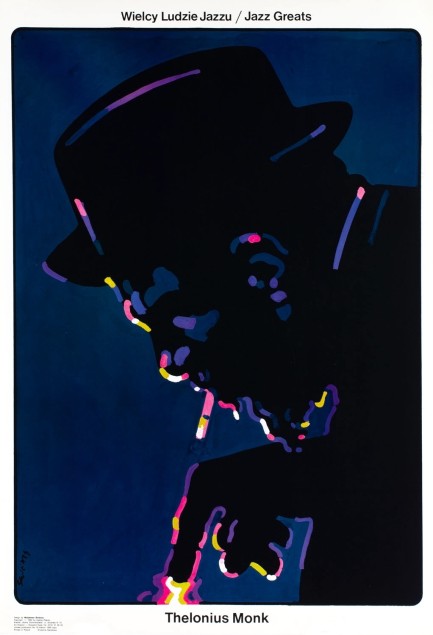  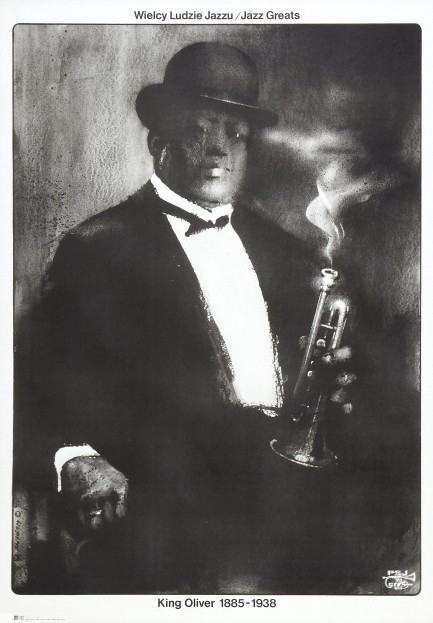 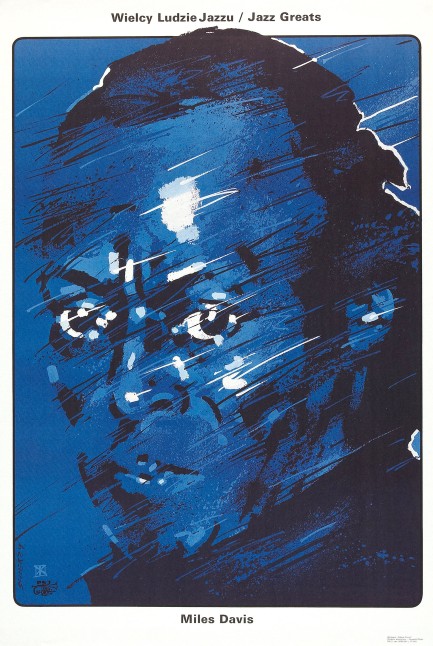 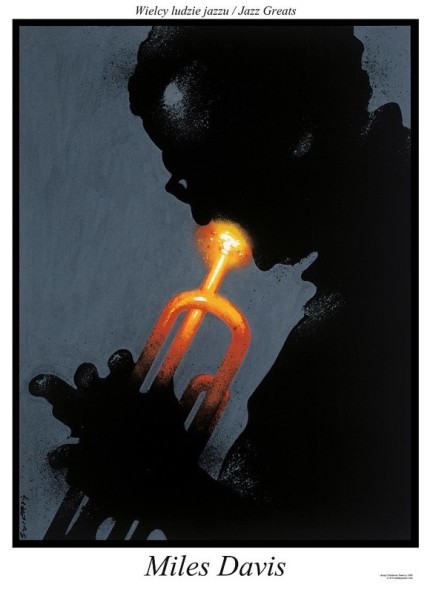 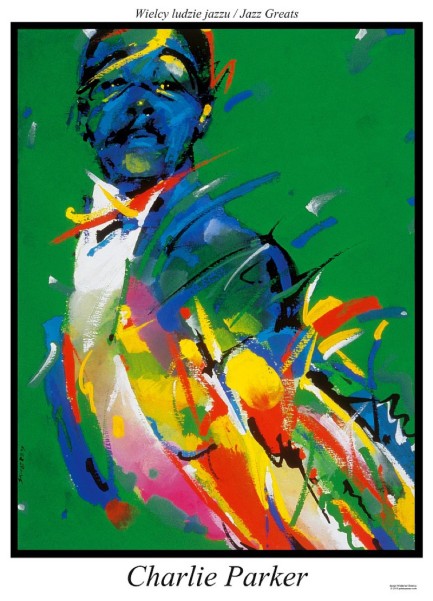 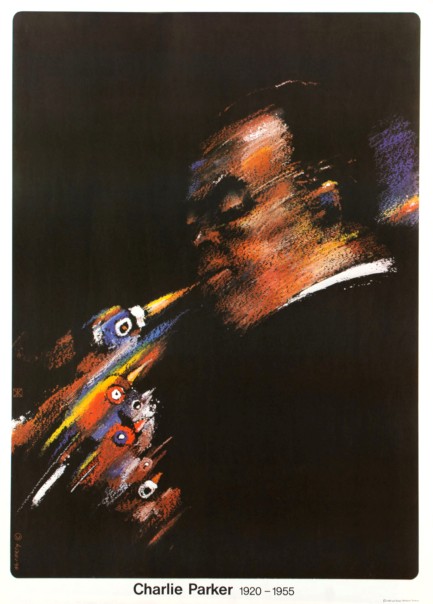 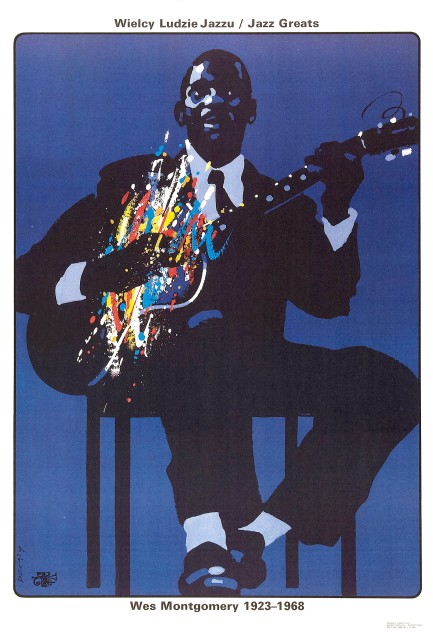
 Mid-century paperback artists were in tune with the times. 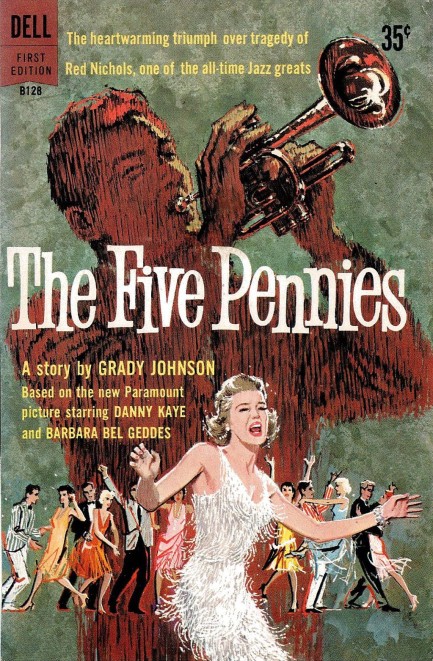 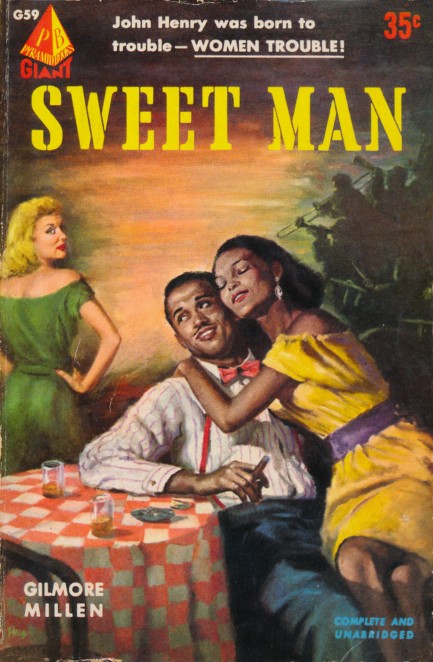 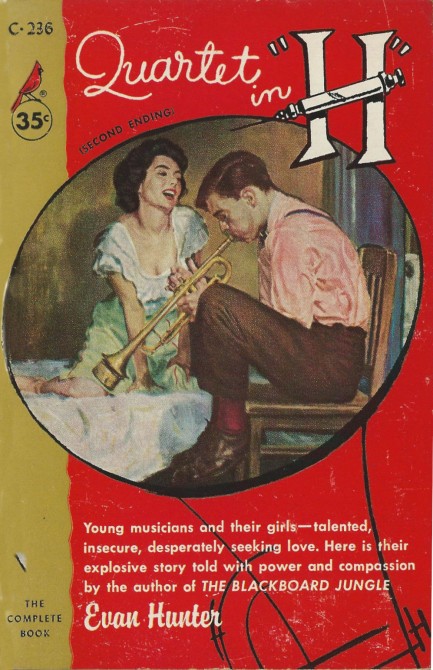 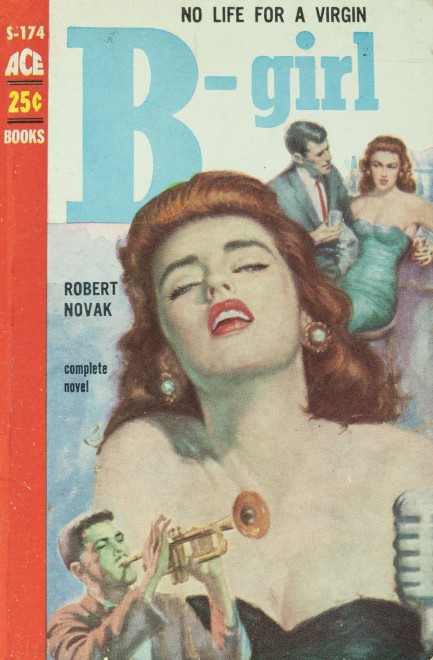 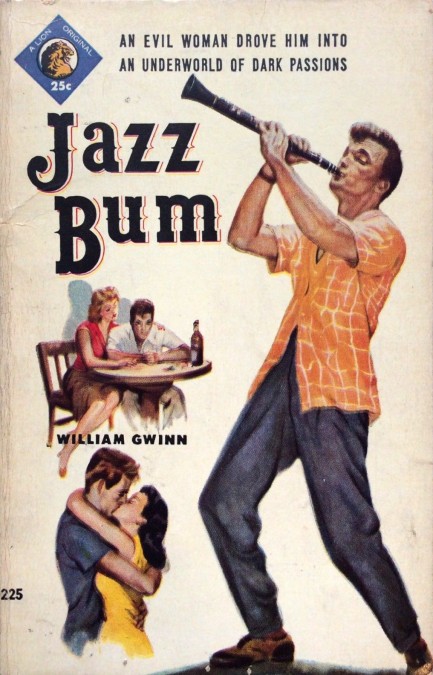 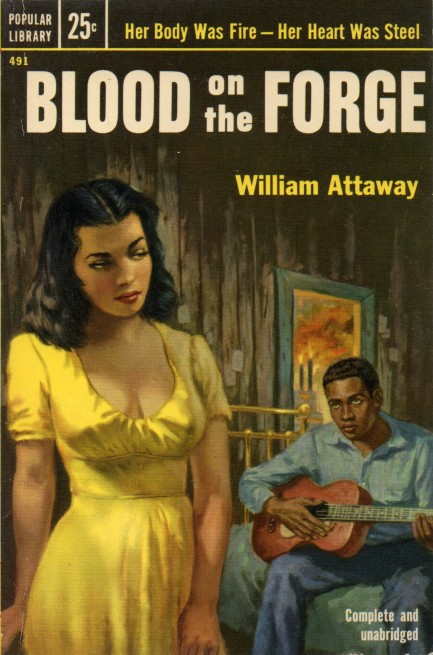 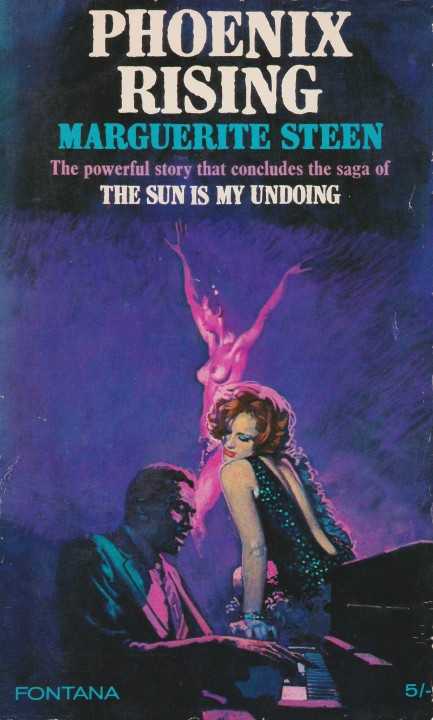 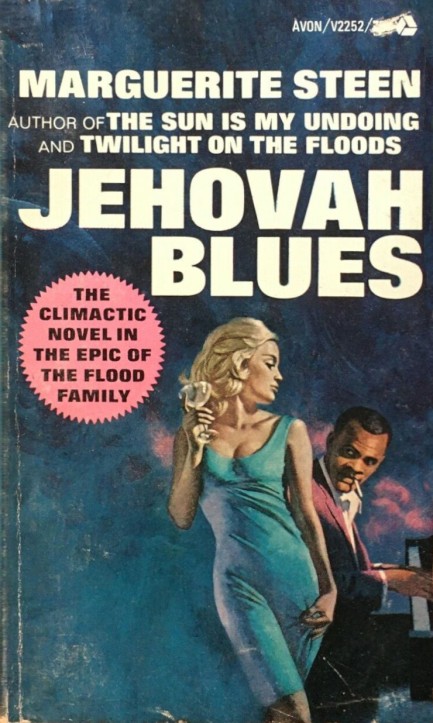 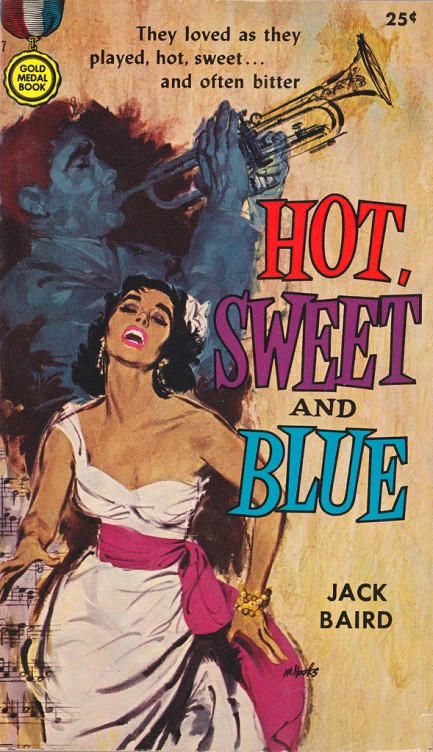 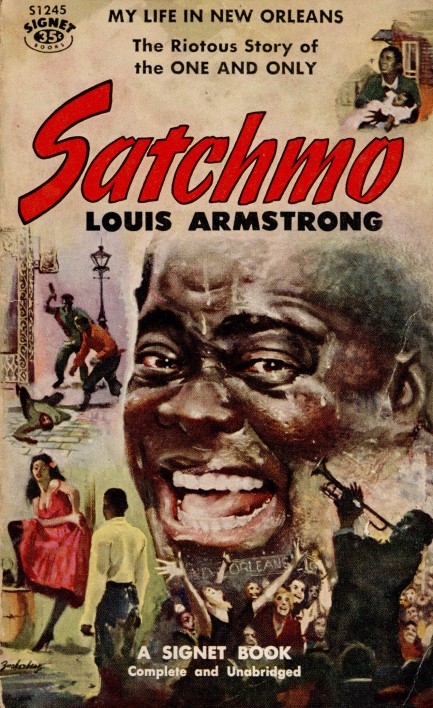 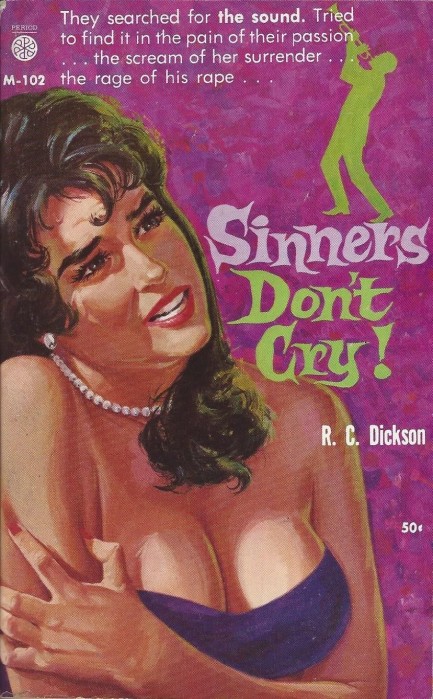 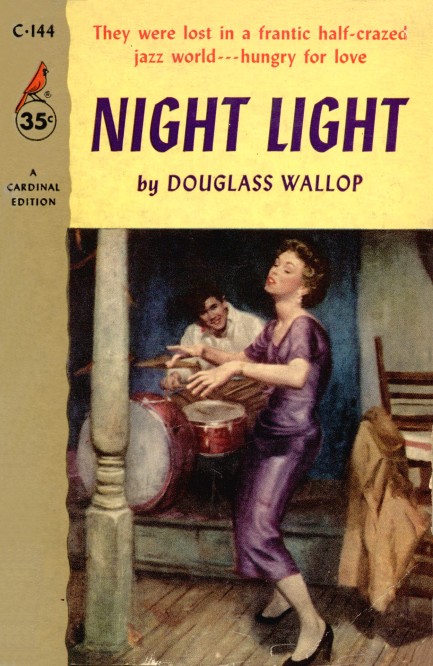 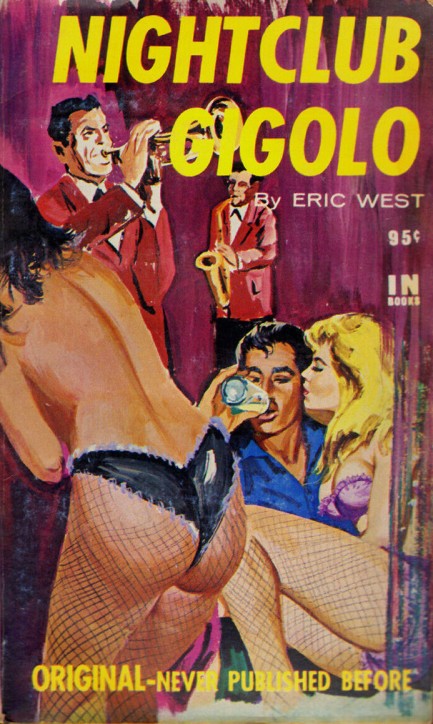 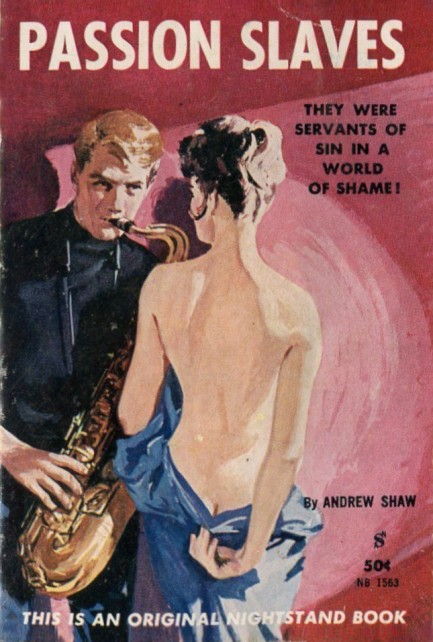 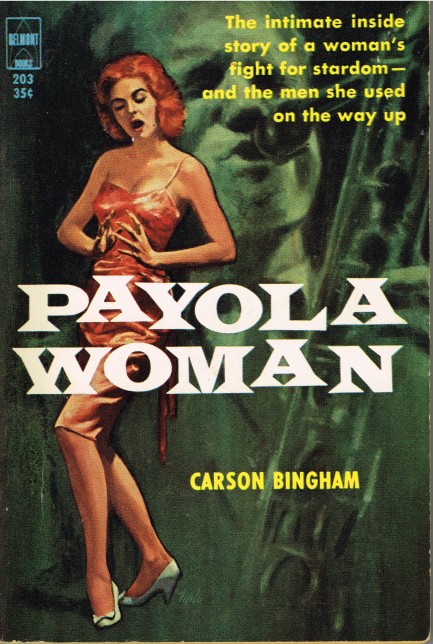 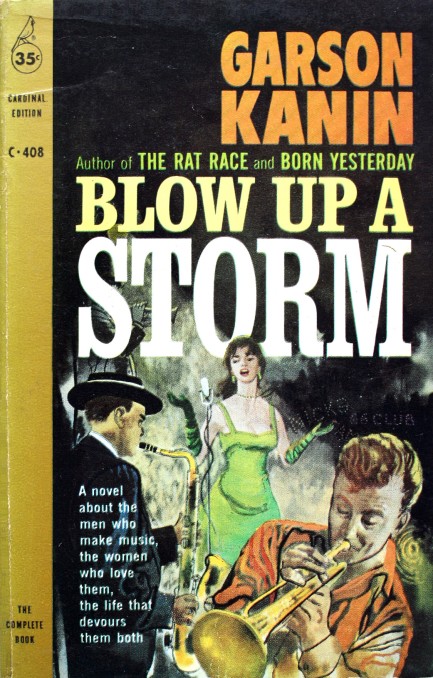 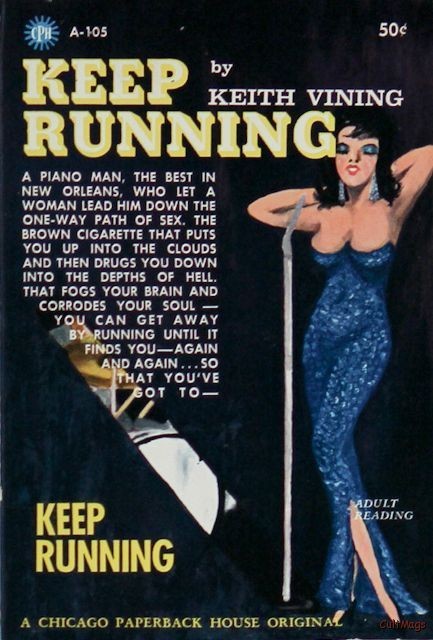 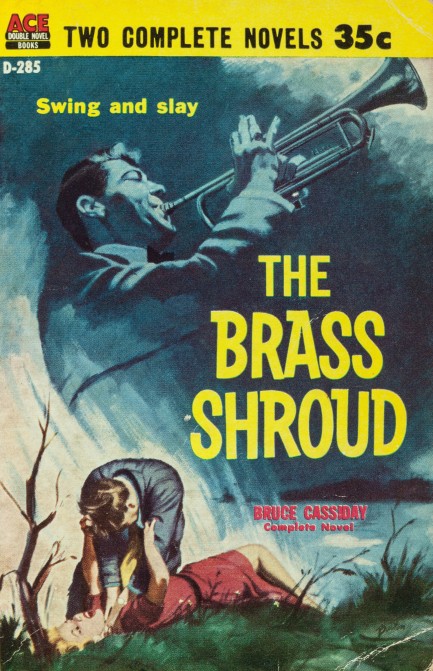  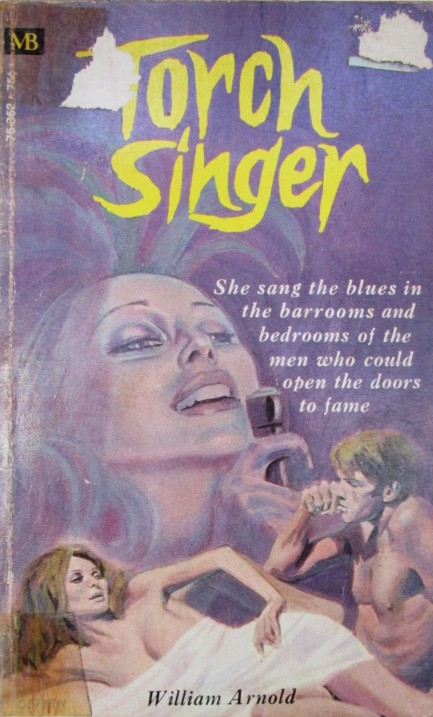 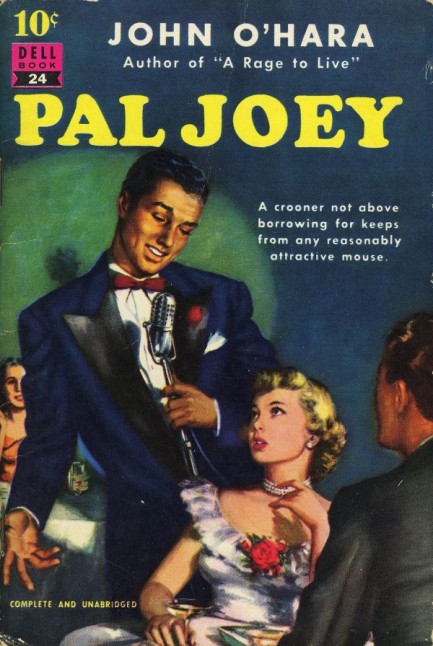 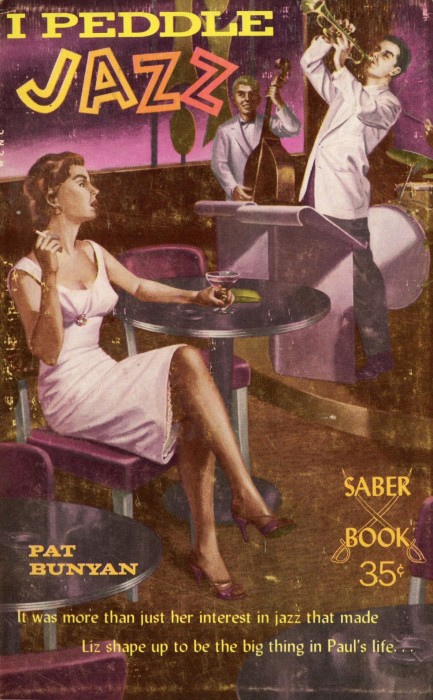 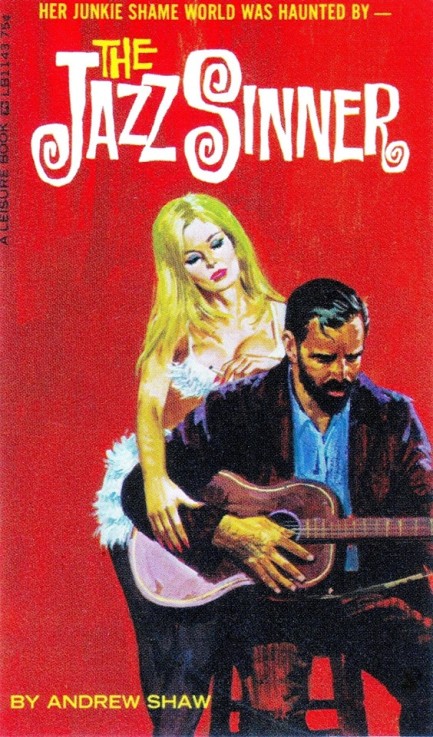 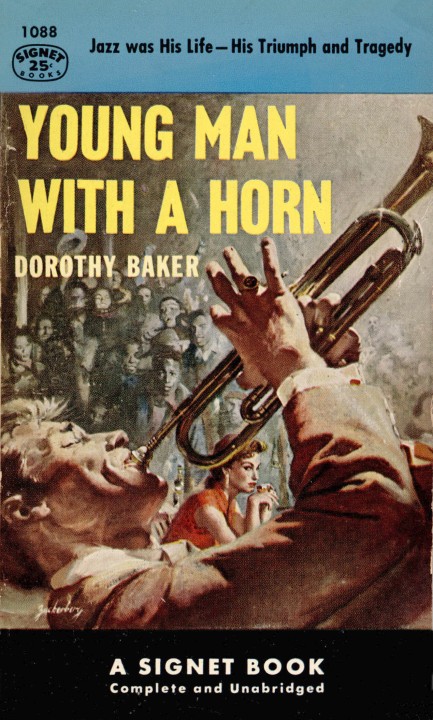 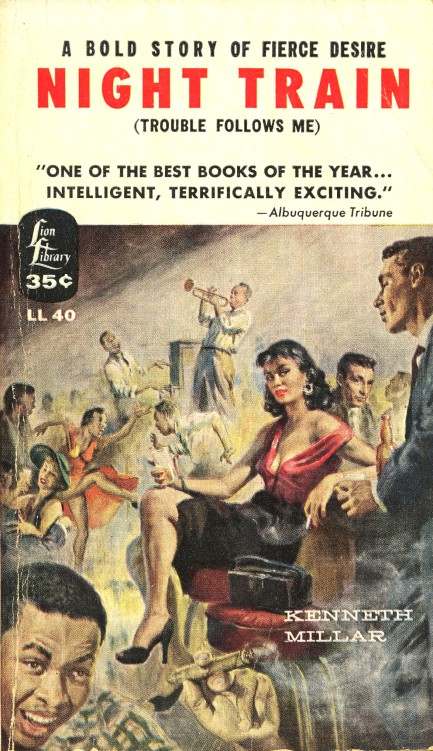 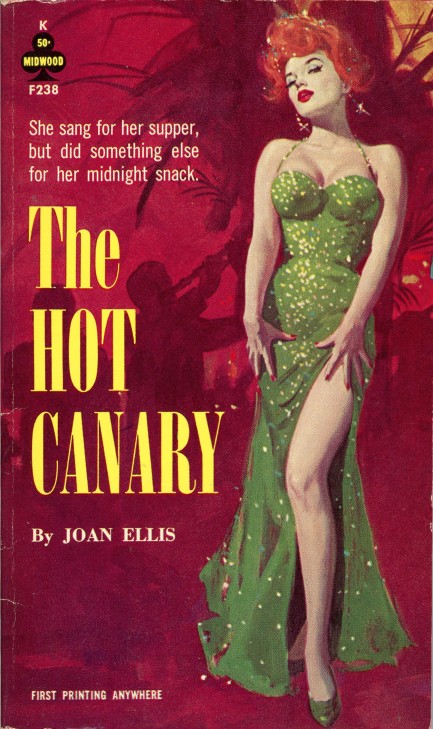 
There are numerous jazz themed mid-century paperback covers. The jazz milieu—with its smoky clubs, passionate personalities, and idiosyncratic ways—fascinated readers. Above you see a small collection of fronts that visually reference the uniquely American (black American) art of jazz. We've also added a couple of the many torch singer and crooner covers out there that seem jazzy enough to fit. The artists are Barye Phillips, Stanley Zuckerberg, Harry Barton, Mitchell Hooks, Julian Paul, and others. We've previously posted quite a few jazz covers, and we have a few jazz themed books still to read, so in both cases you won't see those pieces here. We don't keyword for jazz, which means a search for those we've already posted would bring up a welter of books, movies, tabloids, and album covers. Therefore, in order to save you the trouble of wading through all that, here are some links. We'll limit ourselves to ten: here, here, here, here, here, here, here, here, here, and here.
 How it started nobody can remember for sure. How it ended nobody can ever forget. 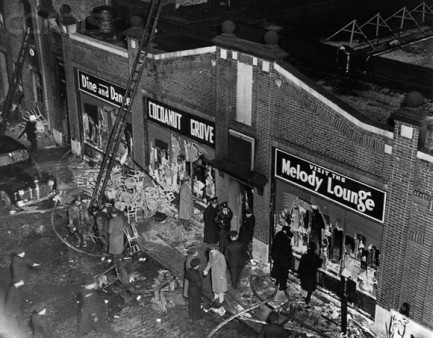
Above is a photo of the aftermath of the Cocoanut Grove fire of 1942. Its appearance belies the scope of the disaster that took place there. The Cocoanut Grove had been founded as an illegal speakeasy and, after the 1933 repeal of Prohibition, became Boston’s trendiest nightspot. It consisted of several properties that had been consolidated into one, and was a labyrinth of tropical-themed bars, lounges, and dining rooms, complete with a famous “rolling roof” that allowed patrons to dance under the stars during warm summer nights. The club’s cobbled together construction meant there were many points of egress, but owner Barnet “Barney” Welansky was preoccupied with the possibility of people using these to dash without paying their checks, and had hidden some exits behind curtains, locked others, boarded up a plate glass window, and bricked over an emergency exit.
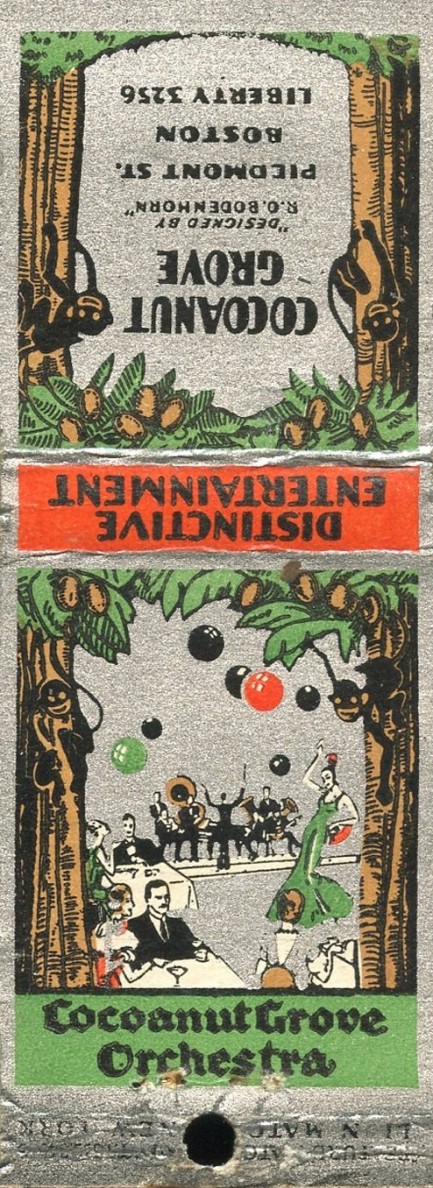 About 10:15 p.m. one frigid November night a fire started for the most banal of reasons. A soldier in the Melody Lounge, which was in the basement, had either loosened or removed a light bulb in an artificial palm tree to create the privacy he desired in order to make out with his date. A busboy was ordered to replace or tighten it. He climbed onto a chair and lit a match so he could see, very likely using one from a matchbook like the one at right. Moments later the canopy of artificial palm fronds overhead caught fire. Whether it was the match or the light bulb that started the blaze nobody ever figured out for sure, though the busboy unambiguously blamed himself and the match. About 10:15 p.m. one frigid November night a fire started for the most banal of reasons. A soldier in the Melody Lounge, which was in the basement, had either loosened or removed a light bulb in an artificial palm tree to create the privacy he desired in order to make out with his date. A busboy was ordered to replace or tighten it. He climbed onto a chair and lit a match so he could see, very likely using one from a matchbook like the one at right. Moments later the canopy of artificial palm fronds overhead caught fire. Whether it was the match or the light bulb that started the blaze nobody ever figured out for sure, though the busboy unambiguously blamed himself and the match.
But in any case, flames blossomed through the paper and rattan decorations. Waiters tried to douse them but they quickly became what witnesses described as a fireball. This fireball raced up a staircase to the lounges and bars on the ground floor and men and women ran upstairs with their hair ablaze. The flames burst into the main level and triggered a deadly crush at the revolving door entrance, which was immediately rendered useless as patrons tried to escape by pushing in opposite directions. Another crush formed at a set of double doors that opened inward from the street. In the panic, the patrons couldn’t organize themselves enough to step back so the exit could be opened. As people struggled, passed out, and piled up before the doors, the flames consumed everything. Many people escaped. They ran through the kitchen, or squeezed through barred windows. The house band’s bass player, Jack Lesberg, who later went on to perform with Louis Armstrong and Sarah Vaughan, among others, smashed his way out using his stand-up bass. Five survivors barricaded themselves in a walk-in freezer. In all, about half the occupants escaped, but in the end the fire killed 492, which was thirty-two more people than were legally allowed to inhabit the building. Some patrons were so quickly overcome by fumes that they died sitting at their tables. Firemen described charred corpses with glasses in their hands. Barnet Welansky went to jail for multiple counts of manslaughter, but was pardoned after only four years by Massachusetts Governor Maurice J. Tobin, who had been the mayor of Boston at the time of the fire. Helps to know people, and helps even more to drink with them. The Cocoanut Grove fire—or inferno might be a better word—was today in 1942.
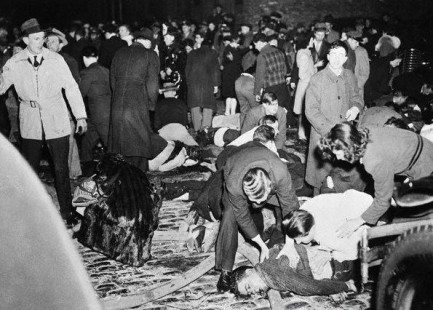 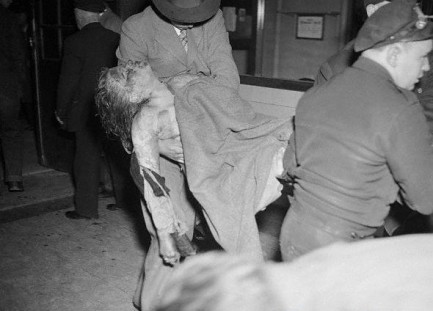 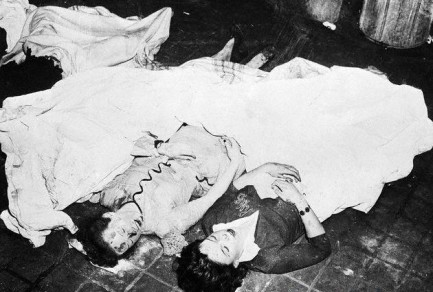 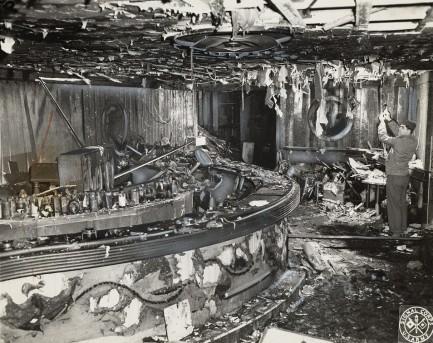 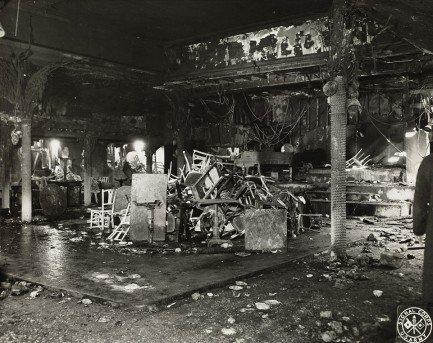
|
 |

The headlines that mattered yesteryear.
1945—Churchill Given the Sack
In spite of admiring Winston Churchill as a great wartime leader, Britons elect
Clement Attlee the nation's new prime minister in a sweeping victory for the Labour Party over the Conservatives. 1952—Evita Peron Dies
Eva Duarte de Peron, aka Evita, wife of the president of the Argentine Republic, dies from cancer at age 33. Evita had brought the working classes into a position of political power never witnessed before, but was hated by the nation's powerful military class. She is lain to rest in Milan, Italy in a secret grave under a nun's name, but is eventually returned to Argentina for reburial beside her husband in 1974. 1943—Mussolini Calls It Quits
Italian dictator Benito Mussolini steps down as head of the armed forces and the government. It soon becomes clear that Il Duce did not relinquish power voluntarily, but was forced to resign after former Fascist colleagues turned against him. He is later installed by Germany as leader of the Italian Social Republic in the north of the country, but is killed by partisans in 1945. 1915—Ship Capsizes on Lake Michigan
During an outing arranged by Western Electric Co. for its employees and their families, the passenger ship Eastland capsizes in Lake Michigan due to unequal weight distribution. 844 people die, including all the members of 22 different families. 1980—Peter Sellers Dies
British movie star Peter Sellers, whose roles in Dr. Strangelove, Being There and the Pink Panther films established him as the greatest comedic actor of his generation, dies of a heart attack at age fifty-four.
|

|
|

It's easy. We have an uploader that makes it a snap. Use it to submit your art, text, header, and subhead. Your post can be funny, serious, or anything in between, as long as it's vintage pulp. You'll get a byline and experience the fleeting pride of free authorship. We'll edit your post for typos, but the rest is up to you. Click here to give us your best shot.

|
|













































 About 10:15 p.m. one frigid November night a fire started for the most banal of reasons. A soldier in the Melody Lounge, which was in the basement, had either loosened or removed a light bulb in an artificial palm tree to create the privacy he desired in order to make out with his date. A busboy was ordered to replace or tighten it. He climbed onto a chair and lit a match so he could see, very likely using one from a matchbook like the one at right. Moments later the canopy of artificial palm fronds overhead caught fire. Whether it was the match or the light bulb that started the blaze nobody ever figured out for sure, though the busboy unambiguously blamed himself and the match.
About 10:15 p.m. one frigid November night a fire started for the most banal of reasons. A soldier in the Melody Lounge, which was in the basement, had either loosened or removed a light bulb in an artificial palm tree to create the privacy he desired in order to make out with his date. A busboy was ordered to replace or tighten it. He climbed onto a chair and lit a match so he could see, very likely using one from a matchbook like the one at right. Moments later the canopy of artificial palm fronds overhead caught fire. Whether it was the match or the light bulb that started the blaze nobody ever figured out for sure, though the busboy unambiguously blamed himself and the match.





